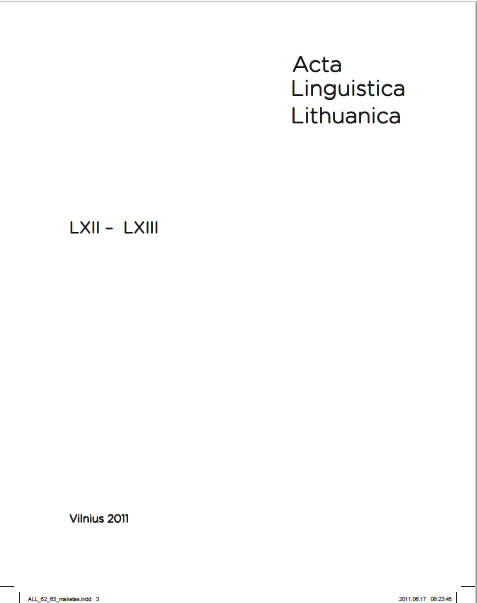Prijungiamieji laiko sakiniai su jungiamuoju žodžiu (pirm) neg senuosiuose XVI–XVII a. lietuvių raštuose
Temporal Clauses with Conjunction neg in Old Lithuanian Writings
Author(s): Jūratė PajėdienėSubject(s): Theoretical Linguistics, Syntax, Semantics, Historical Linguistics, Baltic Languages, 16th Century, 17th Century
Published by: Lietuvių Kalbos Institutas
Keywords: subordination; temporal clauses; temporal posteriority; facticity; dual semantic function;
Summary/Abstract: The article gives an overview of the structure and semantics of subordinate clauses of time boundary with the conjunction (pirm) neg in Old Lithuanian writings (in texts of Bretkūnas’ Postilla (1591), Daukša’s Postilla (1599) and Sirvydas’ Punktai Sakymų (I – 1629, II – 1644)). In all these texts most popular are temporal clauses with the compound conjunction pirm neg (only the compound conjunction pirm neg is used in temporal clauses in Bretkūnas’ Postilla). The temporal clauses introduced by the single conjunction neg (no longer used in temporal clauses in Modern Lithuanian) are found in the texts by Daukša and Sirvydas.
Journal: Acta Linguistica Lithuanica
- Issue Year: 2011
- Issue No: 62-63
- Page Range: 26-49
- Page Count: 24
- Language: Lithuanian

